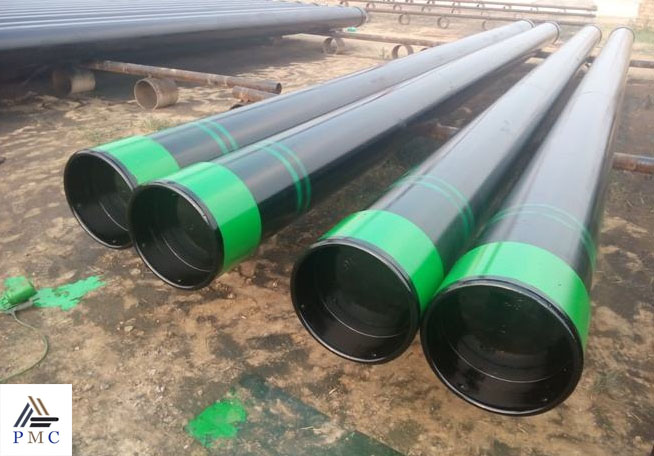
Steel Casing Pipe Weight Calculation
[(outer diameter-wall thickness)*wall thickness]*0.02466=kg/meter (weight per meter)
PS: Don't forget to calculate the weight effect of the coupling.
What are the factors that affect the weight of steel casing pipe ?
The weight of steel casing pipe is not fixed, but is affected by several key factors:
Pipe diameter: Pipe diameter refers to the inner and outer diameters of the steel casing pipe and is one of the key factors affecting weight. All other things being equal, a larger pipe diameter means a larger cross-sectional area of the steel casing pipe, which in turn requires more steel and naturally results in a heavier weight.
Wall thickness: Wall thickness refers to the thickness of the steel casing pipe. As wall thickness increases, the amount of steel used per unit length increases, and the weight of the steel casing pipe also increases. Special environments such as high pressure and high corrosion require thicker steel casing pipe to ensure safety and durability. Such thicker steel casing pipe can be significantly heavier than conventionally thickened products.
Length: The length of the steel casing pipe is directly proportional to its weight. The longer the length, the more steel is consumed and the heavier the weight.
Material: Different steel materials have different densities, which directly contributes to variations in the weight of steel casing pipe. Common steels include carbon steel, stainless steel, and alloy steel. Carbon steel has a relatively constant density of approximately 7.85g/cm³. Stainless steel, depending on its alloy composition, generally has a density between 7.93 and 8.0g/cm³. Alloy steels have a wide range of densities depending on the type and content of alloying elements. For steels of the same size, the higher the material density, the heavier the steel casing pipe.
Chemical composition:
(1) According to SY/T6194-96 regulations. The casing and its coupling are of the same steel grade. Sulfur content <0.045%, phosphorus content <0.045%;
(2) Take chemical analysis samples according to the provisions of GB/T222-84. Carry out chemical analysis according to the relevant part of GB223;
(3) Provisions of the American Petroleum Institute API SPEC 5CT 1988 1st Edition. Chemical analysis The samples were prepared according to the latest version of ASTME59, and the chemical analysis was carried out according to the latest version of ASTME350.

(1) According to SY/T6194-96 regulations. For flattening test (GB246-97) tensile test (GB228-2010) and hydraulic test;
(2) Hydrostatic pressure test, flattening test, sulfide stress corrosion cracking test, hardness test (as specified in the latest version of ASTM E18 or E10), tensile test, transverse impact test ( ASTMA370, ASTME23 and the latest version of relevant standards), grain size determination (the latest version of ASTME112 or other methods).
Package:
According to SY/T6194-96, the domestic casing should be bundled with steel wire or steel belt. A protection ring shall be screwed on the exposed portion of each casing and coupling thread to protect the thread.
Go here to learn more about " Casing Pipe Manufacturing Process"


